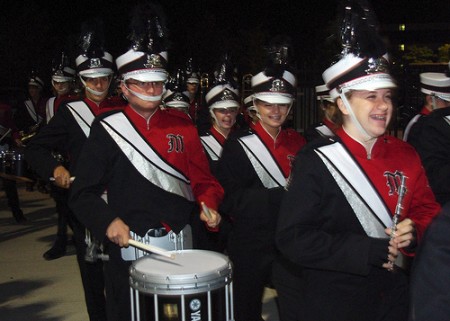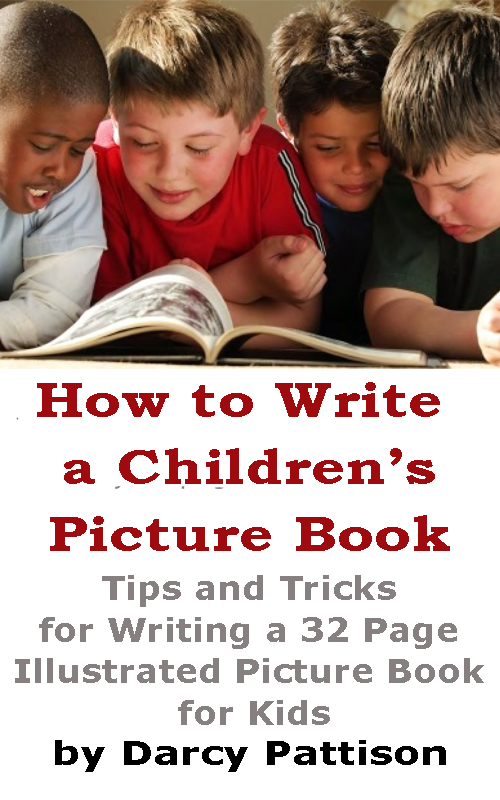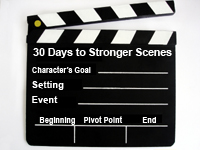I just finished the book Isaac's Storm by Erik Larson, about the hurricane that destroyed Galveston in 1900. The prose was powerful, thrilling and as unrelenting as the storm Larson wrote about. The story documents with near microscopic detail the events surrounding the storm, and the one man who stood in the center of it -- meteorologist Isaac Cline.
Larson's exacting narrative and his notes in the back of the book are mandatory reading for anyone interested in writing nonfiction. In his notes he discusses how he "filled in the blanks" of the history of a place that was literally wiped off the face of the earth. Larson says:
"I approached the problem the way a paleontologist approaches a collection of bones. Even with so little to go on, he manages to stretch over those bones a vision of how the creature looked and behaved. I have been absolutely Calvinist about the bones of this story -- dates, times, temperatures, wind speeds, identities, relationships, and so forth. Elsewhere, I used detective work and deduction to try to convey a vivid sense of what Isaac Cline saw, heard, smelled and experienced in his journey toward and through the great hurricane of 1900."
Larson goes on to explain that he "mined the library's holdings for anything that might provide a fragment of my dinosaur's skin....I used details from these photographs to decorate the scenes in Isaac's Storm." Maps guided him through the city to trace Isaac's steps, and photographs let him see exactly what Isaac would have seen. From the map, Larson knew that he would have walked past a lumber mill, a bulk coffee roaster, and several livery stables. "Each must have perfumed the day."
His own observations provided details about "... dragonflies on Galveston Island, the behavior of seagulls in the north wind, and the colors of wave crests during a tropical storm."
Larson's research involved massive amounts of data and facts, but he never lost sight of the need to infuse his stories with the sights, sounds, and smells that would put his reader in the eye of the storm.
Next week: Using Fair Assumptions in Nonfiction
Viewing: Blog Posts Tagged with: Sensory details, Most Recent at Top [Help]
Results 1 - 16 of 16
Blog: Writing Nonfiction for Children (Login to Add to MyJacketFlap)
JacketFlap tags: Anatomy of Nonfiction, How to Infuse Sensory Details into Your Nonfiction - A Lesson from ISAAC'S STORM, nonfiction, writing, Sensory details, Peggy Thomas, Add a tag
Blog: Darcy Pattison's Revision Notes (Login to Add to MyJacketFlap)
JacketFlap tags: description, setting, Novel Revision, sensory details, Add a tag
I’ve been reading lots of manuscripts lately and a common problem keeps arising. As a reader, I keep wondering, “Where am I?”
The plot and characters are often interesting, but I’m lost. I need a map to figure out where I am. In other words, setting is crucial to keeping your readers grounded in your story.
When?
Often, the problem is that I don’t know WHEN the story is taking place. This could be anything from what century to what season of the year. The simple detail of a Christmas tree might be enough to reorient me to the setting. Or I might need details of clothing worn in 1492 to understand the setting. Either way, the relevant details must be woven into the story. However, you can often just add a simple phrase to indicate time: early that morning, an hour later, or meanwhile.

Where?
The WHERE question can be much more complicated because it should be woven into the story seamlessly. One writer recently said that she was afraid to bog down her story with lots of description. That fear kept her from adding details that would keep the reader grounded. Novels aren’t screenplays or movie scripts; for those, you expect the production to fill in the blanks. For novels, though, you must play the movie in the reader’s head for them.
Beats in dialogue. This is especially important in dialogue or conversations between characters. Another writer had nice dialogue, but it was all in isolation–talking heads. You must remember that the characters are people who fidget, move around, blunder around or just nod their heads. Of course, sometimes you DO want a section that focuses on words. But even there, the right detail at the right time can emphasize a point, add comic relief, or make the story more believable.
Setting comes alive when you have the right details, usually sensory details. If you were a character in the story, in this particular scene, what would you see, hear, smell, touch, or taste? Description comes down to the careful use of our senses to put the reader into the scene.
Often, I’ll create a sensory details worksheet. Down a side of a page, I’ll write the senses: See, Hear, Smell, Touch, Taste. Then, for each sense, I try to find three details unique to the setting. I’m also trying to do it in language that would be used by the POV character.
Be specific as you do this.
Not: dog
Instead: Pit Bull
Notice that I didn’t say, “Big Dog.” The use of modifiers–adjectives and adverbs–weakens a story. Instead, I search for a more specific word, such as the name of a dog breed. Only after the verb or noun is as specific as possible do I allow myself to add modifiers.
Not: dog
Instead: Pit bull
Even Better: pit bull with a white-tipped tail
Be reasonable. Sometimes, “dog” is enough, depending on the story, where you want the reader to pay attention, and the intended audience. For a toddler’s story, Dog would be reasonable. Mostly, though, writers need to be more specific and avoid those adjectives that work as a crutch, but really add nothing to the description: good, nice, big, small, etc.
A special note on Touch/Feel: Often writers want to translate this into emotions. Instead, I mean this as a physical sensation of touch, usually temperature or texture.
Not: I loved my lunch.
Instead: The chili burned my tongue.
Once I have a list of sensory details, I like to start a scene with a unique detail. I search the imagined setting for something that will make a reader stop and pay attention. Here are some descriptions from the first pages of my Aliens, Inc. Series. The series is for 1st-4th grade readers, and each story begins in art class. Use the links to download sample first chapters to read more.
- “Mrs. Crux, the art teacher had put a blue bowl of fruit on each table and said, ‘Paint this.'” from Kell, the Alien, Book 1, The Aliens Inc. Series
- “I swiped a streak of red across my paper.” from Kell and the Horse Apple Parade, Book 2, The Aliens Inc. Series
- “I bent over the giant state of Texas.” from Kell and the Giants(Listen to the audiobook sample), Book 3, The Aliens Inc. Series
- “My hand dripped with blue paint.” from Kell and the Detectives (audiobook sample), Book 3, The Aliens Inc. Series
Balancing Description and Narrative
It’s impossible to tell you how to balance the narrative descriptions, dialogue and action. As an author, you need to learn which area you are strongest in and which is your weakest area. If you consistently get the response from readers, “I’m lost,” then you need to provide more description. Don’t fear the descriptions. They won’t slow down the reader unless you really go overboard. But they can sure LOSE you a reader, if you get them lost. They won’t trust you to tell the story and will stop reading.
In other words, listen to your early readers. If they are confused about what is happening, your descriptions are weak. If they are drowning in detail, the story will feel slow-paced. Work to find the right balance for your story and your readers. Just be sure they never get lost.
Blog: Teaching Authors (Login to Add to MyJacketFlap)
JacketFlap tags: April Halprin Wayland, fiction, Poetry Friday, Nonfiction, research, Stem, Sensory details, Turning Life into Fiction, Janet S.Wong, Sylvia Vardell, Poetry Friday Anthology, science poems, Add a tag
.
Howdy, Campers, and Happy Poetry Friday! (the link to this week's PF host is below.)
First: welcome, welcome to our newest TeachingAuthor, Carla! I am in awe of your writer's journey, Carla, because when I learned that we would be discussing non-fiction, my legs trembled and my palms grew cold and damp. Unlike you and Mary Ann, in her wonderful first salvo on this topic, I am not, by nature, a researcher. I am NOT a "Just the facts, M'am."
 |
| Jack Webb as Joe Friday in Dragnet, from Wikipedia |
Well...I DO tell my students that real details bring fiction to life, and have them listen to the following short audioclip from StoryCorps. Talk about bringing a subject to life! The details Laura Greenberg shares with her daughter are priceless--not to mention hilarious.
Still, I struggled to write poems for The Poetry Friday Anthology for Science (Pomelo Books). By "struggled" I mean I read science articles and wrote tons of stinky poems about rocks, astronauts, materials science, the expiration dates on seed packages,electricity, science experiments...and on and on and on.
But...I dread gettting facts wrong--my worst nightmare. (Confession: writing these blog posts scares the bejeebers out of me.)
In fiction, I can fly my fairy-self to Planet Bodiddley and make up all the materials science by myself. But if I have to convey facts? And then somehow bake them into a tasty poetry pie? I get tied up in knots. My writing becomes stiff as a board. I'm afraid of...
But finally I stumbled on this fascinating fact, in a review of The Big Thirst by Charles Fishman:"The water coming out of your kitchen tap is four billion years old and might well have been sipped by a Tyrannosaurus rex."
Wow. Think of the water you drink. Think of the water you take a BATH in!!!! Ten versions of "Space Bathtub" later (with considerable coaching from the ever-patient anthologists, Janet Wong and Sylvia Vardell) this fact became a poem for kindergartners:
OLD WATER
by April Halprin Wayland
I am having a soak in the tub.
Mom is giving my neck a strong scrub.
Water sloshes against the sides.
H2O's seeping into my eyes.
The wet stuff running down my face?
She says it came from outer space!
The water washing between my toes
was born a billion years ago.
from The Poetry Friday Anthology for Science
(c) 2014 April Halprin Wayland, all rights reserved
If you're a K-5th grade teacher, this book is so immediately useful, you'll cry with relief when you open it. Trust me. For details, and to watch under-two minute videos of poets (Bobbi Katz, Kristy Dempsey, Mary Lee Hahn, Susan Blackaby, Buffy Silverman, Linda Sue Park and me) reciting our science poems from this anthology, go to Renee LaTulippe's No Water River. Again, trust me. (A little foreshadowing: Pomelo Books' newest anthology, Celebrations! comes just in time for Poetry Month this year--stay tuned!)
Blog: Darcy Pattison's Revision Notes (Login to Add to MyJacketFlap)
JacketFlap tags: seattle, setting, washington, Novel Revision, sensory details, puget sound, Add a tag
Goodreads Book Giveaway
Enter to winI am researching the setting and background for a new novel, which I hope to set near Seattle, WA. I’m going there next month for a week and am trying to sort out what I need to know by the end of the week.
What I Need to Know
Sensory Details. I’ve written about the importance of vivid sensory details here, and here, and again, here. As a young writer, I heard over and over, “Show, Don’t Tell.” When I finally made that more specific–use vivid sensory details–my writing took off. I can’t over-emphasize the importance of great sensory details. I consider it the basic writing exercise for fiction.
That means, I need to walk around the proposed setting and be a fully-present human. I need to soak in the smells, tastes, sounds, sights and what it feels like to move around in this place. I remember a couple years ago, I was at a conference on Puget Sound and a salmon was swimming up a tiny stream. Thrashing, 3-foot long salmon, powerful tale, the smell of salt water and the bacon I was eating at a restaurant, the stream only 2 inches deep, the salmon like a Gulliver in Lilliputia.
When I write details, I don’t care about whole sentences. I’m just creating a word bank so that later, I can draw from the memory what I need. I also need to be able to extrapolate. If it’s like this on Bainbridge Island, would it also be like this in the San Juan Islands far north of there? I need specific enough, yet general enough details so that the story comes alive, but isn’t bogged down by details so specific that I can’t move around the area.

Port Townsend, WA. My husband took this photo when we were in the Seattle area a couple years ago for a sailing trip. Photographs are great research tools. Click to enlarge and see just how spectacular this photo really is. Copyright 2008, Dwight Pattison.
Facts. Oh, dear. There are so many facts that I need to know about the Seattle area. Volcanoes, Puget Sound, school system, boats and on and on. I can absorb lots of that just by visiting the area, but fortunately, I do have long-time residents who can vet the story for me after the first draft. I need to know enough to get the STORY right, and then details can be tweaked.
Logistics. Of course, this is another category of facts, but slightly different than what I meant earlier. For this, I need to know transportation details. How long does it take to go–walk, bike, drive a car, swim, take a ferry–from point A to point B. This is crucial to developing a reasonable time line. Part of this is understanding maps, of course, but mostly it’s about physically moving a person around the landscape.
Culture. Now, here’s a fuzzy one. What cultural elements will impact the story I am planning. Attitudes, beliefs, institutions, dialect/slang unique to the area, how people here DO something–so many subtle and not-so-subtle things need to be taken in (and again, vetted by long-time residents after the first draft).
Whether you create your setting from historical details, contemporary details or create a a fantasy world, this is a crucial step in creating a believable story.
Blog: Darcy Pattison's Revision Notes (Login to Add to MyJacketFlap)
JacketFlap tags: writer, vacation, writing life, emotions, photographs, sensory details, Add a tag
2013 GradeReading.NET Summer Reading Lists
 Keep your students reading all summer! The lists for 2nd, 3rd and 4th, include 10 recommended fiction titles and 10 recommended nonfiction titles. Printed double-sided, these one-page flyers are perfect to hand out to students, teachers, or parents. Great for PTA meetings, have on hand in the library, or to send home with students for the summer. FREE Pdf or infographic jpeg.
See the Summer Lists Now!
Keep your students reading all summer! The lists for 2nd, 3rd and 4th, include 10 recommended fiction titles and 10 recommended nonfiction titles. Printed double-sided, these one-page flyers are perfect to hand out to students, teachers, or parents. Great for PTA meetings, have on hand in the library, or to send home with students for the summer. FREE Pdf or infographic jpeg.
See the Summer Lists Now!
I just got home from ten days in Europe and I am ready to write. Why?
Because getting out of my writing cave makes me bump up against people, against history, against emotional struggles.
This is history and deep emotions rolled into one poignant visit. For example, there was only one survivor of the camp–only one!–and his stories are heartbreaking. One quote was from a young boy who had entered the gas chambers and was heard to cry out, “It’s dark, it’s dark. Mama, haven’t I been good?” His last words.
For a writer to experience a sobering memorial something like this is to plumb the emotional depths to which a character might be forced to go.
One place we stayed was a horse farm in eastern Poland and one morning I walked out with my camera to see what was around. Under the eaves of the horse barns were nest after nest of barn swallows. I like trying to find the small, hidden things to photograph, because as a writer, it reminds me to pay attention to the landscape, to notice the “telling details” that could make a story come alive.
I snapped this photo while we were stopped for a break along a country road. Writers need to remember that there are common emotions and thoughts across all languages and cultures, they are common to humanity. Fear of dogs is one of those things.
And you can find beauty across the world, too, beauty in the common things of life such as a window.
The trip was amazing: as a writer, the trip reminded me that stories are universal, that evoking emotions–both happy and sad–is universal, and that beauty is found in the common things of life.
Blog: WOW! Women on Writing Blog (The Muffin) (Login to Add to MyJacketFlap)
JacketFlap tags: characterization, details, revision, Darcy Pattison, sensory details, Add a tag
 |
| My swimmer will see the world differently than your detective. But how? |
As I picked through my manuscript, something hit me. Yes, I had enough detail for the reader to experience the setting, but I hadn’t chosen the details that my character would most likely notice. I’m a very visual person with an acute sense of smell and am easily distracted by sound, thus I had sight, smell and sound covered.
What was missing were the kinesthetic details, details that focus on movement and how things feel to the touch. My character is a swimmer who is always being told by his teachers to be still. Clearly, I needed to work motion details into my story, because these are the kinds of things that my character would notice.
As I started working attention to motion into my story, I realized that my character may not see the world in black and white, but he would definitely see it in terms of constricting stillness vs glorious motion. That’s just how he’s wired.
Another character that I’ve been working with is a flashy girl who lives in a circus. She does everything with a certain flash and pizzazz so that is how she divides things – allowed to use her pizzazz vs not allowed to use her pizzazz.
A character who can speak to wolves notices more to do with scent and sound than do her fellow humans.
The character who is an incarnation of Persephone is still giving me fits. Obviously, she’s going to be tuned into plants and the natural cycle, but I’m not sure how it will color her perceptions of those around her.
Do you know your characters well enough to know how they see the world? What details would they notice that you would overlook? What is their good vs their bad? Remember, you are answering this for your character. If her answers too closely resemble your own, you might have a bit more work to do.
–SueBE
Read more of SueBE's writing at her blog.
Blog: WOW! Women on Writing Blog (The Muffin) (Login to Add to MyJacketFlap)
JacketFlap tags: adding color, color descriptions, details, description, LuAnn Schindler, sensory details, Add a tag
Earlier this week, while I proofread a few chapters from my current WIP, a scary thought raced through my mind.
'It's so....white.'
Translated, it's completely vanilla and filled with cream-colored references. Even the main female character is decked out in white in almost every scene. (And no, she is not a doctor, and trust me, she's no angel.)
Now, I'm not saying the writing is bad, it's just lacking color in these chapters.
Kind of disappointing coming from a writer with "Mango Crush" on her office walls.
But the revelation reminded me of an exercise I would use with freshman English students who struggled to bring color to their writing.
Perhaps I'd asked them to describe the sun, bring it to life through color. What would I get? Yellow. Plain ol' yellow.
I would ask them to describe the shade of yellow. Is it the color of butter? Of a buttercup along a country road? The yellow of a middle-of-July sunflower? Post-it note yellow?
"Just yellow," students would reply.
The next day, they would be in for a surprise. Paint samples littered a tabletop. (Thank you, locally-owned hardware store.)
"Show me what kind of yellow."
Once they saw the connection between a concrete example and word choice, their writing improved.
I don't want my writing to be 'just yellow' - or just plain ol' white - for that matter. I want vibrant words to run down the pages.
After a trip to the lumber yard, Eros Pink, Adriatic Sea, and Jargon Jade complete the scenes, along with a tinge of Crescent Moon White.
by LuAnn Schindler. Read more of LuAnn's work at her website.
Blog: Teaching Authors (Login to Add to MyJacketFlap)
JacketFlap tags: teen poetry, Sensory details, Writing Workout, April Halprin Wayland, Poetry, Poetry Friday, research, Add a tag
Howdy, Campers! Happy Poetry Friday!
Linda at TeacherDance--thanks, Linda!
Since I seem to be confessing sins lately, I'll get this out of the way fast: does anyone else ever get scared because you know that deep, down, you're really a fraud? Here are two worries in the whispery-thicket of my mind, keeping me from that research phone call or email:
- What do you mean, call the zoo and ask the herpetologist my question? Who am I?!?!? I'm nobody!
- How can I interview a group of seventh grade girls? What if this never gets published? They'll feel betrayed!
Research, for me, comes down to the beauty of finding that one defining detail.
In researching Girl Coming in for a Landing, I spent a day at Magruder Middle School in Torrance, CA on the first day of school.
Here is the pair of poems that made the book:
BACK TO SCHOOL
LAST YEAR
Last year
I worried about where the rooms were
and all those kids.
I didn't know
what kind of binder to buy (three ring?)
or how much lunch money to bring.
Last year I got my hair cut the day before school started.
Dumb me.
It was way too short that first day.
And last year I didn't know if I should buy new jeans
or if my comfortable overalls would be dorky…
or even if anyone cared.
Last year I wasn't sure what time to set my alarm.
Last year
I was scared.
* * * * * * *
BACK TO SCHOOL
THIS YEAR
This year
I've got the perfect organizer
with pockets for every subject (except PE).
This year
I ironed my lavender shirt three days ago
and laid everything out last night.
This year
I set the alarm for six forty-five:
just right.
This year
I got my hair cut two weeks ago
so that it is exactly the right length today.
This year
I have Mr. C for science
Mr. Barton from Tennessee for language arts
and Ms. Konigsberg
for chorus.
Again.
Last year I worried: Who was I? What did I know?
This year
I put on glitter ChapStick and go!
poems (c) 2012 April Halprin Wayland. All rights reserved.
So...besides the alternating inner turmoil and confidence the kids expressed, what was that one defining detail I discovered that day?
Writing Workout: The Devil is in the Details
Here's today's assignment:
1) Choose a topic you're working on or pull one out of the sky: cats, schools in Croatia, comic strips, how to grow asparagus--it doesn't matter.
2) Now, give yourself a reasonable amount of time to research it--30 minutes? A day? Two months? It depends on the project--you decide.
3) Google it, email a friend who knows the field, go to your local dog park and talk to owners, ask to speak with the woman who runs your school district's vegetable garden program.
4) Your goal is to find one killer detail. Something that sparks you, as glitter ChapStick ignited me.
5) Now, write a poem or start a picture book with this detail in mind.
Write, my children, write! And remember to breathe. And to remember to write with joy!
If you use this drawing, please give credit. Thank you!
Blog: WOW! Women on Writing Blog (The Muffin) (Login to Add to MyJacketFlap)
JacketFlap tags: LuAnn Schindler, sense of place, sensory details, adding emotional details, concrete imagery, Add a tag
| A picture may be worth a thousand words, but without an emotional connection, it's difficult to develop a sense of place. |
But lately, as I've been reading, I've noticed a lack of connection in some pieces. Those adjectives and adverbs fluff up the piece, but I don't see a marriage between story and the people or places written about.
What's missing? A defined sense of place.
Without a strong sense of place, a piece of writing lacks a certain rhythm.
What's the remedy?
We writers need to do more than merely observe. Instead, we should be savoring flavors, colors, and textures. We should be noting the fine details that weave through a story and in reality, add more information about a person or place than any darn ol' quote will.
When I taught high school English, I developed a sensory detail web for students to use to create concrete images. It focused on these questions:
- What would you hear?
- What would you smell and taste?
- What physical sensations did you note?
- What else do you see beyond the immediate range?
- What other details do you note that are important?
- What emotions do you have about this place or the situation?
Yet, without that emotional connection, writing falls flat.
A strong sense of place maps the invisible landscape and adds the fine points of a culture, a person or a spot on the globe. And, it makes your story a place worthy of visiting.
by LuAnn Schindler. Photo by LuAnn Schindler (the view from my deck on a frigid January evening in the Nebraska Sandhills). Read more of LuAnn's work at her website.
Blog: Plot Whisperer for Writers and Readers (Login to Add to MyJacketFlap)
JacketFlap tags: conflict, memoirs, character transformation, Thematic Significance, suspense, screenplays, sensory details, relationships in novels, urgency and curiosity, use of emotion, tensions, Add a tag
 Do you writes in layers, one or two layer per draft? Or do you write all the layers of your novel, memoir, screenplay at once?
Do you writes in layers, one or two layer per draft? Or do you write all the layers of your novel, memoir, screenplay at once?
And what are all these layers, you ask?
Emotion: evoking a range of emotions -- positive and negative -- in the reader through the characters' show of emotion.
Conflict, tension, suspense, urgency and curiosity: shaping the dramatic action to keep the reader turning the pages to learn what happens next.
Character transformation: showing a flawed character change overtime spiritually, emotionally, physically, or mentality or all of the above.
Thematic significance: bringing meaning to the story.
Relationships: revealing the complexity and intimacy of the characters in relationship to each other.
Sensory: using senses -- auditory, visual, tactile, taste, smell -- to transport the reader deeper and deeper into the story world.
1) Read The Plot Whisperer: Secrets of Story Structure Any Writer Can Master (The companion workbook is coming this summer and available for pre-order now ~~ The Plot Whisperer Workbook: Step-by-step Exercises to Help You Create Compelling Stories)
2) Watch the Plot Series: How Do I Plot a Novel, Memoir, Screenplay? on YouTube. Scroll down on the left of this post for a directory of all the steps to the series. 27-step tutorial on Youtube
3) Watch the Monday Morning Plot Book Group Series on YouTube. Scroll down on the right of this post for a directory the book examples and plot elements discussed.
For additional tips and information about the Universal Story and plotting a novel, memoir or screenplay, visit:
Blog: Darcy Pattison's Revision Notes (Login to Add to MyJacketFlap)
JacketFlap tags: zoom, scene, how to write, novel revision, sensory details, panorama, scan, focal length, novel, Add a tag
 Have you signed up for 750words.com yet? Or will you try doing 750 words on paper? I’ve just completed my 20th day of doing 750 words!
Have you signed up for 750words.com yet? Or will you try doing 750 words on paper? I’ve just completed my 20th day of doing 750 words!
Here’s another creative writing prompt for your 750 words, a challenge to write 750 words each day in January to better Think Like a Writer. The next three days of Thinking Like a Writer are all connected and I’ll explain it here, then just remind you of the prompts for the next two days.
A scan is a way to show a crowd scene economically, yet in an interesting way. It involves a series of small zooms: the quarterback’s mother is taping the game with a new video camera that she borrowed money to buy; the coach’s pencil is hovering over two names, trying to decide if he’ll start the injured quarterback or his backup; the head cheerleader is trying to shake off a headache and wondering if that red pill the quarterback gave her would help or not. In a short paragraph, you get the complexities of the crowd!
As always, start with the basic sensory details list, but this time you skip around. You can do full details for the coach, the quarterback’s mother, the quarterback, and the head cheerleader if you want; or you can do partials for each, but focus on getting great “telling details.” If you’re rusty on doing sensory details–and you have to fill out your 750 words anyway–go ahead and do the full sensory details list for each. Then you’ll have a wide selection to choose from as you Think Like a Writer.
And when would you use a Scan?
 | NEW EBOOKAvailable on |
Blog: Darcy Pattison's Revision Notes (Login to Add to MyJacketFlap)
JacketFlap tags: dialogue, show don't tell, opening lines, novel revision, holiday writing, sensory details, how to start a story, Christmas writing, eavesdrop, Add a tag
Writing during the Christmas holidays can be difficult. There’s too much to do, too much living to do!
Here are some simple low-stress projects to keep you going. Just have fun with these!
Show-Don’t-Tell with Sensory
Go sit at a mall, beside a seasonal skating rink, at a holiday concert. Notice the sensory details of the setting, and write a short piece that incorporates your best Show-Don’t-Tell skills.
Dialogue Is NOT the Same as Real Talk
At that office party, neighborhood cook-out, or local basketball game, eavesdrop and focus on the authentic sounds of dialogue. If you can do it without looking creepy, take a notepad with you and jot down the exact words that people are saying. Transcribe it later and turn it into a short scene by studying how to change real speech into dialogue that matters. How can you use dialogue to imply information, emotions and relationships?
Play with Opening Lines
Print out this list of excellent opening lines. Over a several day period, take your Work-in-Progress and mimic each of the 12 types of opening lines. Try to write at least a dozen opening lines, but better, write 100 different opening lines for your story.
 | NEW EBOOKAvailable on |
Blog: Darcy Pattison's Revision Notes (Login to Add to MyJacketFlap)
JacketFlap tags: revise, action, how to write, verbs, novel revision, sensory details, novel, characters, characterization, tone, Add a tag
Working on a novel revision, I realize that I need to refocus the relationship between two characters. The question is where to start.
Grand Entrance for Your Character
I once heard the late Sid Fleischman talk about the importance of giving a character a Grand Entrance. Think about a stage play, where a character sweeps onto stage commanding the attention of the audience. It’s a first look at the character and sets the tone for everything that follows.

Characters out of focus? Start revising with the Grand Entrance Scene.
I’ll be focusing at first on the scene where Character B comes on stage and crashes into–literally–Character A. Right now, the scene sets up a romantic relationship and I want to back off that and make it more platonic. How to accomplish that?
Actions. First, I’ll look at the action verbs. A story is almost always contained in the verbs. Too many “to be” verbs (is, are, has, had, am, etc.) and the story is flat, uninteresting. Action verbs characterize and I want to sharpen the characterizations while setting up the relationship differently. It’s not that the ACTION — what the character DO — will change much. But the meaning of the actions will take on a different tone.
Sensory Details. Likewise, the choice of sensory details will be crucial: visual, auditory, tactile, gustatory (taste) and olfactory (smell). For example, if you want to talk about a romantic relationship, you might describe a guy with these details: musky smell, soft curly hair, rough baritone voice, brush of his lips and –well, let’s forget the taste one for now.
On the other hand, a more platonic relationship might be sweaty smell, greasy hair, clear voice, firm handshake and –well, taste just doesn’t work here, either.
I’ll be looking at the actual choice of words carefully. I don’t expect that the scene’s actions will change much, but the reader should get a very different feel for the character relationship.
Tone
Of course, all of this relates to a slightly different tone set up in the relationship. Tone is that underlying attitude that characters have toward something that comes out in the language choices of the writer. I don’t want romance here, but an honest, growing friendship. I’ll use action verbs and sensory details to change that tone in this scene of Grand Entrance. If I can nail it here, it should act as a touchstone as I revise the rest of the novel.
Blog: Darcy Pattison's Revision Notes (Login to Add to MyJacketFlap)
JacketFlap tags: vivid images, book, fiction, novel, Cinderella, plot, scene, write, how to, novel revision, sensory details, actions, Add a tag
It’s NOT a Scene if it Doesn’t Have Conflict
 Join us on Facebook for a discussion of scenes.
Join us on Facebook for a discussion of scenes.
Now that you know how to write a basic scene, let’s move to the overall task of plotting a novel by using scenes. The first task is to consider what scenes are possible for your story.
Let’s take the case of Cinderella. What are the possible scenes for this story?
- Cinderella’s mother & father meet
- Cinderella’s mother & father fall in love and marry
- Cinderella’s mother & father have a romantic night and she’s conceived
- Cinderella is born and her mother dies
- Father meets a new woman and woos her
- Father marries new woman.
- Stepmother and stepsisters move in.
- Stepmother and stepsisters are cruel.
- King declares a ball.
- Step-family says Cinderella can’t go.
- After they leave for the ball, Cinderella meets her fairy godmother who transforms her.
- Cinderella attends the ball and falls in love with Prince.
- Cinderella flees ball and leaves behind her shoe.
- Prince seeks woman who can wear the shoe.
- Prince finds Cinderella, they get married and live happily ever after.
Notice that I’ve left out many, many possible scenes? Partly that’s because a simple list like this isn’t sufficient; instead, you need to focus the scene list in some way.
Featured Today in Fiction Notes Stores
Use Plot Templates to Focus Scene List
Looking at the 29 possible Plot Templates, you could make a case for any of these plots:
- Quest: Cinderella seeks a better place in life and finds that she must set aside appearances to see the inner character of people.
- Rescue: From the Prince’s POV, he must rescue Cinderella from the clutches of her evil step-mother.
- Revenge: How Cinderella takes revenge on her step-family. Not often told, but it’s a possibility.
- Rivalry. Usually the step-sisters are awful and not real competition to the lovely Cinderella. But what if (and great stories are made from what ifs!) one of the step-sisters is a real rival. It’s a new twist on the story.
- Underdog. Of course, this is the classic Cinderella story.
- Love. Or is her story the classic love story?
- Ascension. Cinderella’s rise to power in the kingdom.
Each plot pattern would require a different set of scenes, emotions, motivations. Let’s take the unusual one of Rivalry, just for fun.
Cinderella as a Rivalry Plot
First, recognize the minimum required by your chosen plot template.
- Characters: Cinderella, Prince, Wonderful Step-Sister
- Plot:
- Girl meets boy. Add a Comment
Blog: Darcy Pattison's Revision Notes (Login to Add to MyJacketFlap)
JacketFlap tags: character, emotion, show don't tell, novel revision, sensory details, how to create, Add a tag
Develop Your Character Inside and Outside
I’m working on a revision of an older story and am finding that my character is flat, lacking emotion.
Here’s what should happen: action, reaction, thought and/or emotion.
Here’s what is happening: action, reaction.
Of course, there’s lots of variation and times when either might be appropriate. But overwhelming, I’m finding that I try to imply the emotion by the reaction, but it’s not always working.
There’s this tension in writing between Telling and Show-don’t-Tell.
Telling
 The tendency is to tell: he was upset.
The tendency is to tell: he was upset.
This type storytelling was popular before the invention of the modern novel, when storytellers created as much by their own voice and body language as anything.
The storytelling mode allows you to tell something and leave it at that. Listeners expected little else.
Show-don’t-Tell.
But with the novel, we are able to delve deeply into a characters thoughts, emotions, psyche. That’s why novels will never be replaced by film, because you can’t go deeply inside a character in any other way. Telling may still be used in bits and pieces, to summarize unimportant parts of the story.
But now, we expect thought and emotions to be forefront. Even more than that, though, we expect novels to be full of action and for that action to demonstrate the emotion/thought, so there isn’t so much telling going on.
Novels, then, go deeper into story by delving into the thought and emotions of a character; but also, by demonstrating those thoughts and emotions with concrete actions. It’s the concrete actions that create the Show-don’t-tell parts of storytelling.
Full Zoom: Inside and Outside
One way to think about it is that a scene is where the “narrative camera of words” zooms in. You get the full sensory details of the story situation and full details of character emotions/thoughts. In other words, the inside and outside of the story are in full zoom.
For sensory details, you must fully imagine being the character in this situation and what they would see, hear, smell, touch and taste. For emotions, we should know intimately what s/he is going through.
For me, it’s not Show-don’t-Tell; instead, I like Show-then-tell-some.
 |  It's Here. |
Blog: Darcy Pattison's Revision Notes (Login to Add to MyJacketFlap)
JacketFlap tags: writing tips, writing life, Christmas, Christmas tree, characters, angels, writing techniques, peppermints, be a writer, sensory details, shepherds, Wise Men, Add a tag
Creative writing tips, courtesy of the season:
- Peppermints! When you add sensory details to a story, the most common is visual details. The two most neglected are olfactory (smell) and gustatory (taste). Flavors of the season are peppermint, cinnamon and cloves.
- Gifts! Give your character something to hold in his/her hands. It’s one of the easiest and best ways to characterize someone, while providing you, the writer, with great verbs. Put an iron skillet in Grandma’s hands and watch her rustle up a meal for the 30-odd relatives coming by tomorrow.
- Trees! The setting of a story can add to the mood, if you choose the right details. A pathetic, sad tree is aluminum, thin, sparse, leaning. A cheerful tree is straight, full, soft fir needles, well-lit, glowing, radiant. Be precise in the details you use and you’ll evoke a mood to support (or contrast) with your character’s inner life.
- Worship! Just as the Wise Men, shepherds and angels worshiped the birth of the Christ, so we should remember to keep life in perspective. Writing is fun and consuming, but there’s more to life than just writing. Take time off to enjoy your family, attend a madrigal feast (I’m going Thursday night!), go caroling with friends, and ponder the Deep Magic of this special child.





















SueBE--Thanks for this post. So many times, the little things have a huge impact. Going back over a short story, or--Yikes!--a manuscript is a great exercise.
Sometimes, if I need to add something physical, I will actually "role play" and act out the shift on the couch, the picking up of a heavy box--and try to bring it to life on paper.
Thanks for this post.
I think this is something a lot of us do--we (as the narrator and creator) get in the way of our character. I say that to my students a lot: don't forget to filter your setting details and everything in the story world through your character's eyes--this is especially true for first person and third person limited. I love your examples, too!